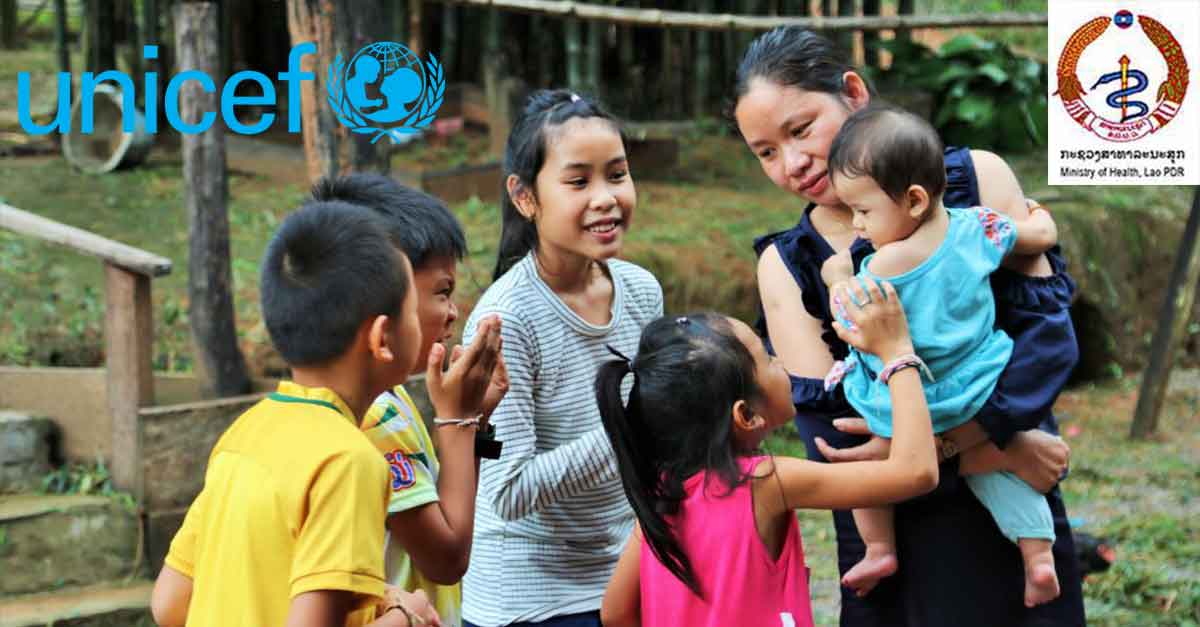Nutrition is still an issue in developing countries including Laos.
Causing delayed growth and resulting in long-term impairments if not addressed, is both a result and cause of poverty in rural areas including Savannakhet’s Xepon.
In Laos, UNICEF supports the Ministry of Health to help mothers and children in disadvantaged communities to access key health and nutrition services, including antenatal care and immunization to achieve the Sustainable Development Goals (SDGs), Mike Saycon writes.
After her daughter was diagnosed with malnutrition, a mother commits to restoring her health.
Loulli has just woken up from her nap, eager to play with her older sister and cousins. At eight months old, she is full of energy and laughter and tries to stand on her feet. But until recently, her story was very different.
Three months ago, Loulli was getting recurrent fevers and weighed noticeably less than the other children in the neighbourhood. At first, her mother simply attributed Loulli’s low weight to her poor appetite.
“She seemed healthy and was growing taller, but had little appetite for breastmilk or for other food.” Khamvilay says.
But as the bouts of fever and lack of appetite continued, her mother became increasingly worried and took her to the hospital.
Loulli was diagnosed with Moderate Acute Malnutrition, or low weight-for-height. The condition can increase children’s risk of dying.
Nutrition averting serious health problems
In addition to treating Loulli, doctors and nurses at the hospital monitored Khamvilay’s health to be sure she was also healthy. The mother was initially worried that her daughter’s condition was caused by her low milk supply, but staff assured her this was not entirely the problem, and introducing other nutritious foods could help.
After leaving the hospital, Khamvilay redoubled her efforts to breastfeed her daughter. She also started feeding her rice porridge mixed with mashed vegetables and SuperKid (a mix of vitamins and minerals added to food to prevent micronutrient deficiencies, which UNICEF provides to local health centres.
Around 45% of the deaths among children under five globally are linked to nutrition.
Today Loulli is well on her way to recovery. She has gained 1.3 kg in just three months, growing to 7.3 kg. “Still slow compared with other children,” says a nurse who attended to Loulli at the clinic, “but I am confident she is on a steady recovery – especially with the way she responds to stimuli around her environment, and her level of energy.”
If left untreated, Loulli could have suffered in the long run. Undernutrition can harm brain development irreversibly, weaken health and immunity making children susceptible to infections and diseases, hinder performance in school, and decrease productivity as an adult. Even worse, around 45% of the deaths among children under five globally are linked to undernutrition.
The urban-rural divide
Khamvilay now vows to continue breastfeeding Loulli, although she says she may have to stop when her daughter reaches 18 months. This is still below the recommended two-year threshold, but she will have to return to her job as a secondary school teacher.
For working mothers like Khamvilay, there are ways to get around this: she can either take advantage of the Government policy of an hour-long break to return home and feed Loulli, or she can express milk in advance and keep it in the freezer.
But there is wide disparity in access to maternal and child health care in Laos, and women from poorer, rural villages often do not have these options.
Only around half of rural women get sufficient antenatal care, while coverage for women in urban areas is 90%.
In rural areas, many of the health centres are too far away and women cannot afford to take the time off work or have no means of transport.
In other cases, their husbands, mothers or other family members may keep them from seeking medical care.
And because most women in poorer villages do not have any form of maternity leave, they are forced to choose between working and breastfeeding their children, and often choose the former.
Investing in health centres, especially in remote areas, and increasing the number of skilled health workers is essential. But equally important is to keep mothers informed of the services that are available to them, and changing the attitudes that prevent them from providing proper nutrition to their newborns.
UNICEF supports the Ministry of Health to help mothers and children in disadvantaged communities to access key health and nutrition services, including antenatal care and immunization.
As part of this effort, UNICEF and partners raise awareness and provide counselling on infant and young child feeding practices, including breastfeeding.
UNICEF also helped the Government develop a nutrition communication strategy for social and behaviour change, as well as a parenting package to be rolled out in 2019.
For more, visit unicef.org/stories/preventing-harmful-effects-malnutrition-lao-pdr



